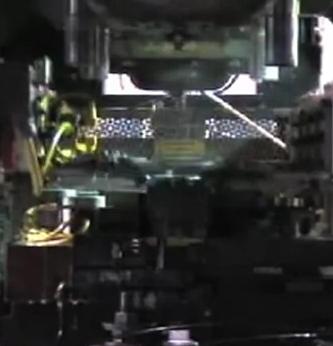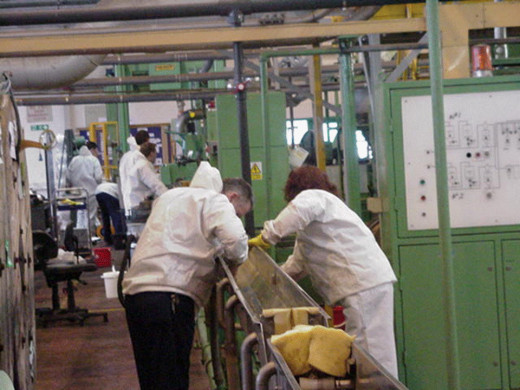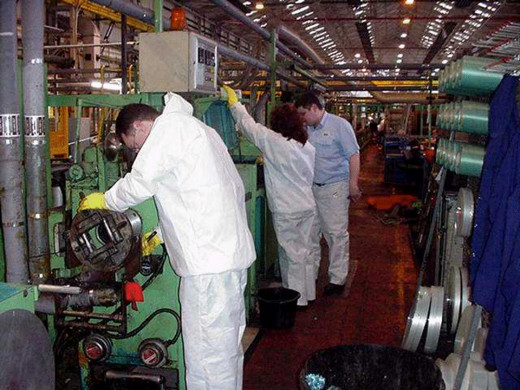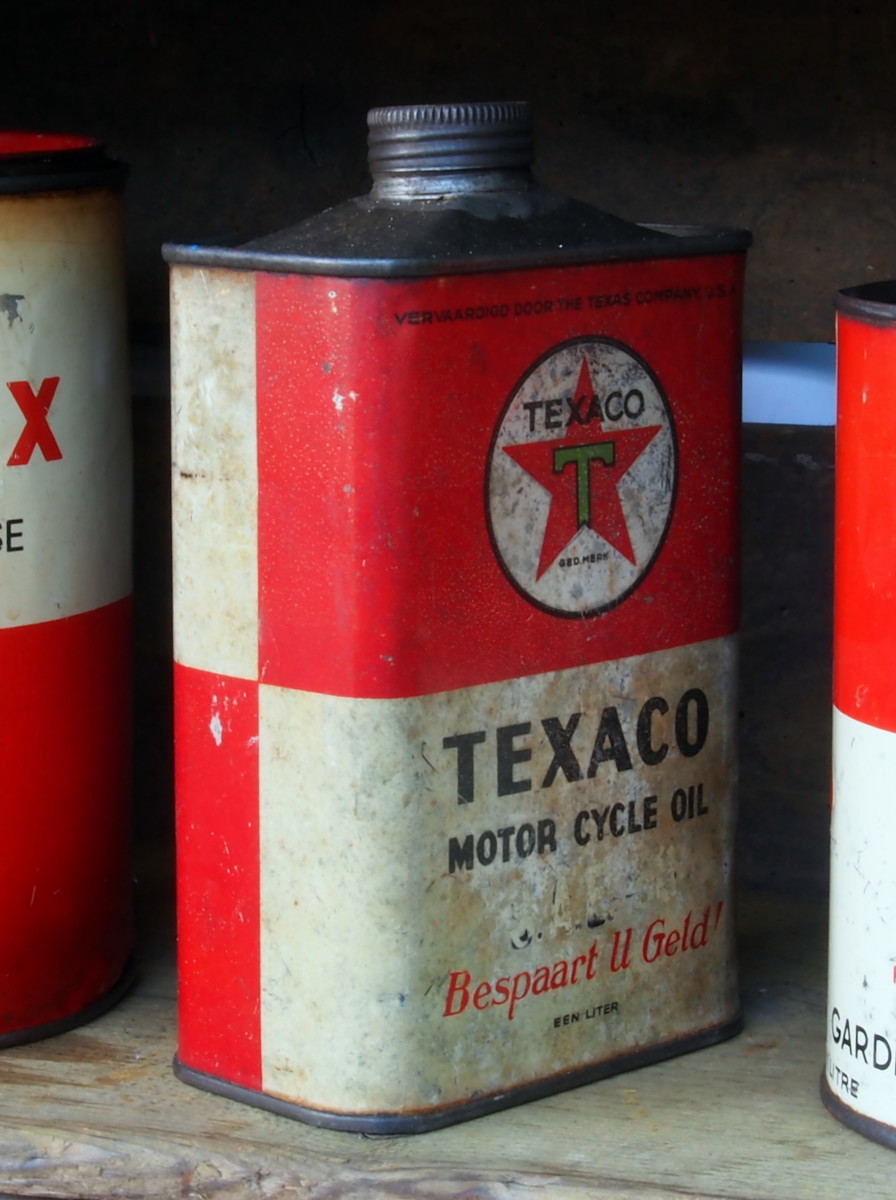Autonomous Maintenance
What is Autonomous Maintenance
Autonomous maintenance is part of Total Productive Maintenance (TPM) and involves the operators of the machines and equipment in the maintenance regime. Autonomous means "independent" and as such requires the operators of the company's machines to undertake basic maintenance tasks such as lubrication and inspection allowing them to become more familiar with their machines and create greater ownership and responsibility rather than the usual "we run the machines, and the maintenance man fixes them" attitude.
By giving the responsibility for simpler tasks to the operators we free the maintenance professionals to do more important work to try to ensure that we can prevent breakdowns totally through looking at how to improve the reliability and maintainability of our machines.
Operator Maintenance

Seven Steps of Autonomous Maintenance
It is not possible to just hand over the responsibility for basic maintenance to the operators without a planned process of training and education. Generally within TPM and Autonomous maintenance this is achieved through the following seven Steps;
- Initial Cleaning and Inspection
- Removal of the Causes of Contamination and improvement of Access
- Cleaning and Lubrication Standards
- Train for General Inspections
- Conduct General Inspections
- Implementation of Visual Maintenance Management
- Continuous Improvement
Maintain Machinery by Keeping it Clean


Cleaning and Inspection
By initial Cleaning we mean more than just a cursory wipe over with an oily rag, this is the removal of years of accumulated dirt and grime to bring things back to the condition they were in when the machine was first purchased. This is a similar stage to the "shine" stage of 5S.
The aim of the cleaning is not just to make things "clean", it is a thorough inspection of the whole machine to identify any problems, highlight where dirt is created or gets into the machine, and to identify areas that are difficult to reach to clean and maintain.
Use red tags to highlight all problems, these problems should be fixed right away to enable the removal of the red tags. For problems that cannot be immediately fixed a plan must be made for the removal of the tag.
Autonomous Maintenance Video
Remove Causes of Contamination and improve Access
Often machines will quickly become dirty after cleaning, we therefore need to examine where the dirt is coming from and take steps to either prevent or minimize the dirt being produced or being able to enter the machine. We also need to improve our ability to maintain and clean the machines, by improving access to difficult to reach areas and re-routing things like pipework and wiring to make things easier to reach.
Cleaning and Lubrication Standards
The aim of this step is to get the operators to maintain the machinery in its optimum condition through tightening of bolts, lubrication and cleaning. The operators should define and document the standards that they will work to to achieve this and prevent the deterioration of the equipment.
It is important that the operators set the standards and understand the reasons for those standards. Cleaning is not something that most people like to do or see any value in; so by ensuring that the operators are fully involved in every aspect of setting the standards will ensure that they see the full value of what they are doing.
Train for general Inspections
In this stage we need to ensure that the operators have a thorough understanding of exactly how the machine works; what components do what, when, how and why. The operators then define a set of standards for the machine condition and operation and learn how to inspect against them. During this stage it is likely that additional problems will surface as the operators gain more knowledge of the functioning of the machinery, once again red tags should be used to highlight problems and removed as quickly as possible by the rectification of the problem.
It is important that the maintenance team provide as much support to the operators as possible at this stage; after all in the long term it is going to make their lives much easier. It is also vital that highlighted issues are dealt with promptly so that the team gets to see that they are being fully supported.
Conduct Autonomous Inspections
The operators within this stage conduct and improve on the standards for inspections and cleaning. The maintenance departments preventive maintenance schedule is now modified to take into account the works now being done by the operators.
Implement Visual Maintenance Management
The Maintenance Management step is all about standardisation just as in 5S, all of our inspections and maintenance routines should now be fully documented and we look to improve our visual management at the machine. We start to update gauges to show acceptable ranges highlighted in green, label the direction of flow for pipework, modify connections with pokayoke devices so they can only be connected correctly. The aim is to make things as visually clear as possible.
The use of a Kamishabi board at the workplace is encouraged, this is a small T card system to schedule all of the daily routines for the operators. Once conducted the cards are turned to show a different colour so that other people in the organisation can see at a glance that the scheduled work has been completed as required. The Kamishabi board is a very simple tool for the operators to use and the T cards should contain any instructions and time durations that are relevant for the individual tasks.
Continuous Improvement
In every thing that we do there is always room to improve, we encourage everyone to continue to find better and more efficient ways to do the maintenance and inspection checks. Management and technical staff should audit what is being done to allow the operators the opportunity to show off what they do and be congratulated and benefit from the knowledge of the more technical personnel.
No matter how good your maintenance regime is there will still be problems, the important thing is to learn from them and act on them using these principles to ensure that all problems are minimized. Using the resource closest to the process (the operators) will ensure that you maximize your ability to prevent problems such as breakdowns and slow working from occurring.
All About TPM
Learn about TPM and how autonomous maintenance fits within it by following this link;
Autonomous Maintenance TPM
Total Productive Maintenance - TPM
Autonomous maintenance is one of the main parts of TPM and allows the operators to be come more responsible for their machines and have a greater awareness of when their machines are running correctly and when problems are developing. Initially there may be risistance from the operators to having all this extra work but this often melts away as they begin to see the benefits and actually find their work load reduces as problems and frustrations become less.
Through Autonomous Maintenance and the other principles of TPM we seek to reduce the six big losses due to our equipment;
- Breakdowns
- Setup and Adjustment losses
- Idling and minor stoppages
- Reduced Speed
- Defects and rework
- Start-up losses
These loses are generally measured through a metric called Overall Equipment effectiveness or OEE, this is calculated through the measurement of the individual loses (OEE Calculation.)
Total Productive Maintenance and Autonomous Maintenance are very important if you want to have a stable and reliable foundation on which to build any sort of improvement to your business.








